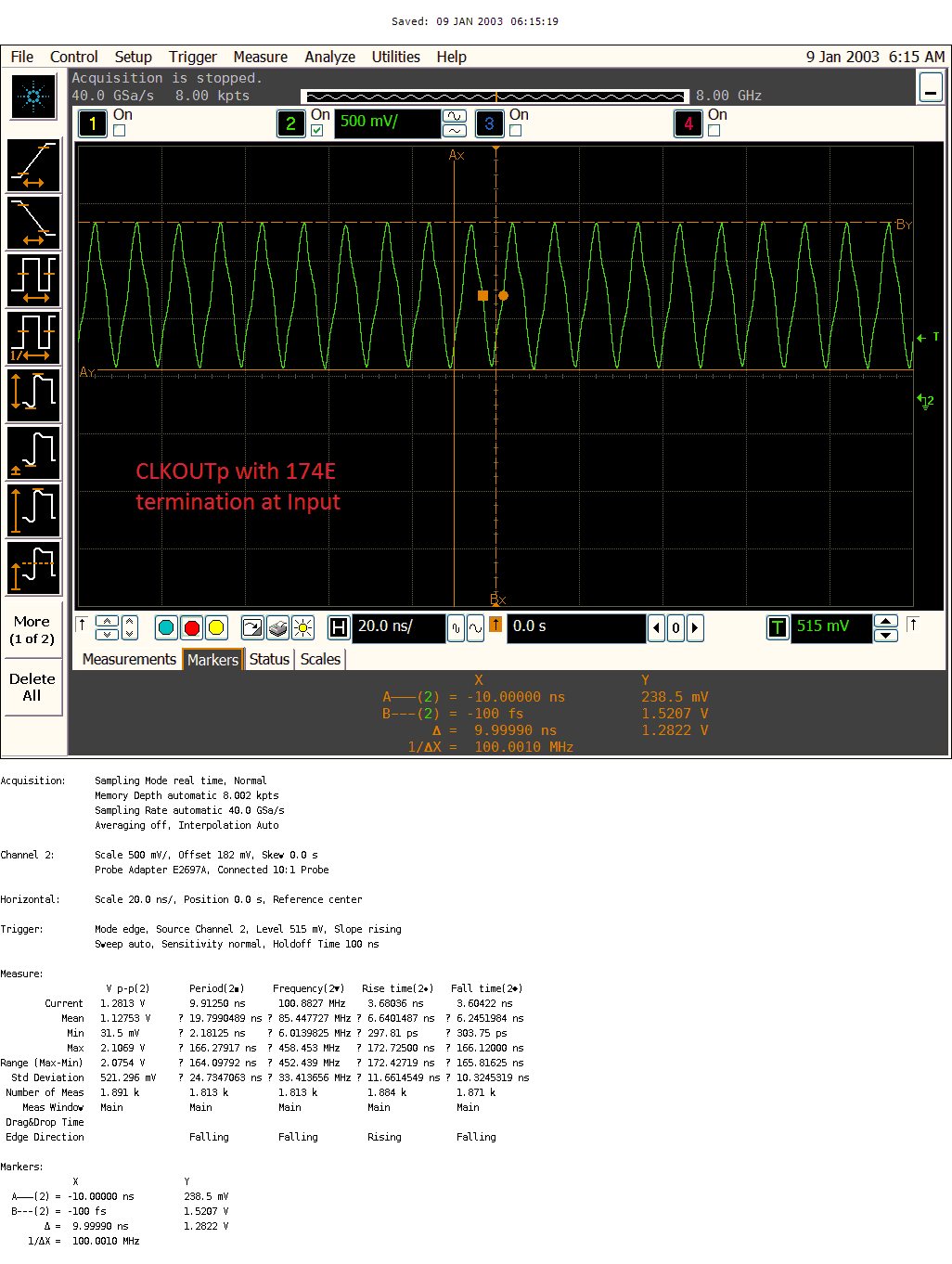Other Parts Discussed in Thread: ADS4245, LMK61E2-100M
We have assembled 3 boards with ADS4245-EP. All 3 were working properly.
Now when we checked ADC data was not proper in two cards.
After debugging it is noticed that -
Board1) ADC ADS4245-EP CLKOUT p/n amplitude is not up to expected level - it is close to 500mVpp (Where as in working card is close to 1Vpp)
Board 2) ADC ADS4245-EP CLKOUT_p is present - almost 1Vpp whereas CLKOUT_n is not there. (continuity is present between device Pin and monitoring point Via)
I m doubtful If ADC have gone bad.
ALL 3 boards have same clock input. (Probed and Verified)
Kindly comment.






















